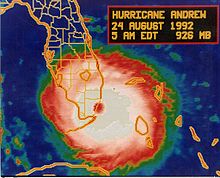27,500 people died when the storm passed through the Lesser Antilles in the Caribbean between October 10 and October 16.
http://en.wikipedia.org/wiki/Great_Hurricane_of_1780
That was 84,035 days ago. Atmospheric CO2 was 280 ppm.
It has now been 787 days since any hurricane hit the US.
6,651 days since a category 5 hurricane hit the US. And 27,460 days since the most powerful hurricane hit the US in 1935.



http://www.theaustralian.com.au/news/health-science/longest-hottest-drought-on-record/story-e6frg8gf-1111117721981 Remember Australia’s 1000 year drought just recently…
Lets look at it closer. First of all the crops failed with the first fleet in 1791, due to, drought.
A drought is an unusually long period of time when there is not enough water for people to use in the way they normally would. There have been many serious droughts in Australia in the last 200 years. The 1895-1903 drought lasted eight years and caused the death of half of Australia’s sheep and forty per cent of its cattle. The 1963-68 drought caused a forty per cent reduction in wheat crops across Australia. In central Australia that same drought actually lasted eight years, from 1958 to 1967.
Drought (1902)
Droughts are a feature of Australian life as Australia is the driest of all the inhabited continents. Possibly the worst ever drought in Australia since European settlement occurred between 1895 and 1903, with the worst year in many areas being 1902. All parts of New South Wales were especially badly affected. The state had its lowest ever yield of wheat – 3.28 bushels. In Queensland, sugar production suffered, and sheep and cattle numbers dropped dramatically. In northern Victoria the average wheat yield was 1.29 bushels – the lowest on record. The drought killed half of the sheep in Australia, and the number of cattle was reduced by 40%. Many farmers and graziers lost everything; some simply walked away from their properties, unable to pay their debts once the dry topsoil had blown away and their animals had all died. A plague of rabbits, economic depression and some crippling labour strikes all added to the serious effects of the drought. Despite such disasters, Australian farmers continued to find ways to farm this ancient land, and to feed not only Australians, but also to export food overseas.
http://www.historysmiths.com.au/CentFedPlayKit/events/nature/1902_drought.htm